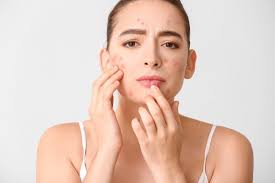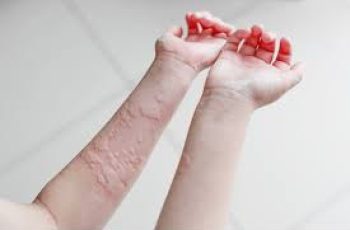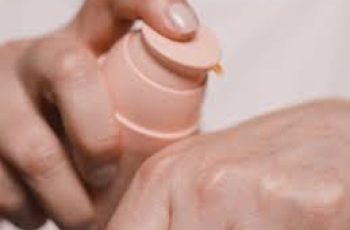
Menopausal Acne: Understanding and Managing the Mid-Life Skin Struggles
As women approach middle age, the changes to their bodies can seem overwhelming. From hot flashes to mood swings and changes in energy levels, menopause brings a host of physical and emotional challenges. Among these, many women are surprised to discover that acne, which they thought they had outgrown in their teenage years, can make a reappearance during this phase of life.
While menopause is commonly associated with the onset of wrinkles, fine lines, and dryness, menopausal acne often goes unmentioned. However, it is a very real and common problem for many women in their 40s and 50s. The good news is that this type of acne is completely normal, and with the right approach, it can be effectively managed. In this article, we will delve into the causes of menopausal acne, its prevention, and ways to manage it with a personalized skincare routine.
What Causes Menopausal Acne?
To understand why acne can make a return during menopause, it’s important to first explore the hormonal changes that occur during this stage of life.
Hormonal Shifts and Acne
The primary cause of acne during menopause is a significant hormonal shift. Throughout a woman’s reproductive years, estrogen and testosterone work in harmony to maintain a balanced and healthy complexion. Estrogen, the dominant female hormone, promotes collagen production and skin hydration, keeping the skin smooth and firm. Testosterone, the primary male hormone, stimulates sebum production, which is a natural lubricant for the skin.
However, during menopause, estrogen levels drop drastically, especially during perimenopause (the years leading up to menopause) and postmenopause. This sudden reduction in estrogen disrupts the balance between estrogen and testosterone, causing an increase in testosterone’s influence. As a result, testosterone levels become more dominant, leading to an increase in sebum (skin oil) production. This excess oil can clog pores, leading to the development of acne.
In addition to acne, this hormonal imbalance can also lead to the development of unwanted facial hair on the chin and jawline. The androgen receptors in these areas of the face respond more strongly to the elevated testosterone levels, causing the growth of fine hairs.
Interestingly, these hormonal fluctuations are not unique to menopause. Similar shifts in estrogen and testosterone occur during other key life stages, such as puberty, early adulthood, and pregnancy. However, during menopause, the decline in estrogen is more sudden and severe, which can exacerbate acne and other skin issues.
The Role of Stress in Menopausal Acne
In addition to hormonal changes, stress plays a significant role in the development of acne during menopause. The period between the ages of 45 and 55—when menopause typically occurs—is often a time of great change and stress for many women. During these years, you may be juggling career responsibilities, raising children (sometimes teenagers), dealing with relationship changes, and navigating your own evolving sense of identity.
All of these stressors can lead to an increase in the production of cortisol, the body’s primary stress hormone. Elevated cortisol levels can trigger a range of skin problems, including acne. Stress can also weaken the skin’s ability to repair itself, making it more prone to irritation and inflammation, which can further contribute to acne flare-ups.
For many women experiencing menopause, stress management becomes an essential aspect of skin health. Finding ways to relax, such as through yoga, meditation, or hobbies, can help regulate cortisol levels and reduce the likelihood of stress-related breakouts.
Prevention: How to Manage Menopausal Acne
The most effective treatments for menopausal acne focus on addressing the root cause: hormonal imbalance. However, managing this imbalance often requires an inside-out approach, as well as a thoughtful and gentle skincare routine to address the accompanying dryness and sensitivity that menopause can bring.
1. Inside-Out Approach: Balancing Hormones
One of the first steps in managing menopausal acne is seeking professional advice. Consulting with a trusted healthcare provider, such as a gynecologist or dermatologist, is crucial. Your doctor may recommend anti-androgen medication, which blocks the effects of testosterone. These medications can help reduce the excess oil production and facial hair growth that contribute to acne during menopause.
In some cases, hormone replacement therapy (HRT) may also be prescribed to help restore hormonal balance. HRT works by supplementing estrogen levels in the body, alleviating the symptoms of menopause, including acne. However, this treatment is not suitable for all women, so it’s important to discuss the potential risks and benefits with your doctor.
2. Topical Treatments: Gentle but Effective Solutions
While hormonal treatments can address the underlying cause of menopausal acne, topical treatments can help manage the visible symptoms and improve the appearance of the skin. The key is to use products that are both effective and gentle, as menopausal skin tends to be more sensitive and dry than younger skin.
Benzoyl Peroxide and Retinol
Benzoyl peroxide and retinol are two well-known acne-fighting ingredients that can be effective for menopausal acne. Benzoyl peroxide works by killing the acne-causing bacteria in the skin, while retinol (a form of vitamin A) promotes skin cell turnover, helping to keep pores unclogged. However, both of these ingredients can be drying, and since dry skin is a common concern during menopause, they should be used with caution. Consider using them only a few times a week or in conjunction with a rich, hydrating moisturizer to prevent excessive dryness.
AHAs (Alpha Hydroxy Acids)
Another powerful skincare ingredient that can benefit menopausal skin is AHAs, which include glycolic acid, lactic acid, and citric acid. AHAs are chemical exfoliants that help remove dead skin cells and accelerate skin cell turnover. This increased turnover leads to smoother, brighter skin with fewer clogged pores, reducing the likelihood of acne breakouts.
AHAs are ideal for menopausal skin because they provide gentle exfoliation without the harsh scrubbing that can irritate sensitive skin. Incorporating an AHA serum or exfoliating toner into your nighttime routine 2-3 times a week can help maintain clear, glowing skin.
Ceramides and Hyaluronic Acid
As skin becomes drier and thinner during menopause, it’s essential to focus on hydration and barrier repair. Ceramides are naturally occurring lipids in the skin that help retain moisture and strengthen the skin barrier. Ceramides can be found in rich moisturizers, creams, and masks, and are crucial for keeping menopausal skin hydrated and healthy.
Another key ingredient is hyaluronic acid, a powerful humectant that attracts and retains moisture. Due to its small molecular size, hyaluronic acid can penetrate the skin deeply and deliver intense hydration, making it a must-have in any menopausal skincare routine.
Using a moisturizer that contains ceramides and hyaluronic acid will help plump and soothe dry, sensitive skin, creating a balanced environment that is less prone to acne.
Building a Skincare Routine for Menopausal Acne
When designing a skincare routine for menopausal acne, there are three key principles to keep in mind:
Gentleness: Avoid harsh exfoliants or aggressive treatments that can further irritate already sensitive skin. Stick to gentle cleansers and soothing ingredients.
Lock in Moisture: Since dryness is a common concern, choose products that hydrate and support the skin barrier. Look for moisturizers containing ceramides, hyaluronic acid, and fatty acids.
Prevent Moisture Loss: After applying hydrating serums or moisturizers, seal in the moisture with a thick, nourishing cream or oil. This will prevent water loss and keep your skin feeling plump and nourished.
Final Thoughts: Embrace Your Skin’s Changing Needs
Menopausal acne is a natural part of the aging process, and while it can be frustrating, it’s completely manageable. With the right skincare routine, it’s possible to keep acne in check while also addressing other menopausal skin concerns, such as dryness, fine lines, and wrinkles. By understanding the causes of menopausal acne and implementing a personalized approach, you can maintain healthy, glowing skin throughout this transition period.
Remember, your skin is constantly evolving, and as you navigate through menopause, it’s important to listen to your skin’s needs. Embrace the changes, focus on gentle, nourishing products, and consult with your healthcare provider to find the best treatment plan for you.


